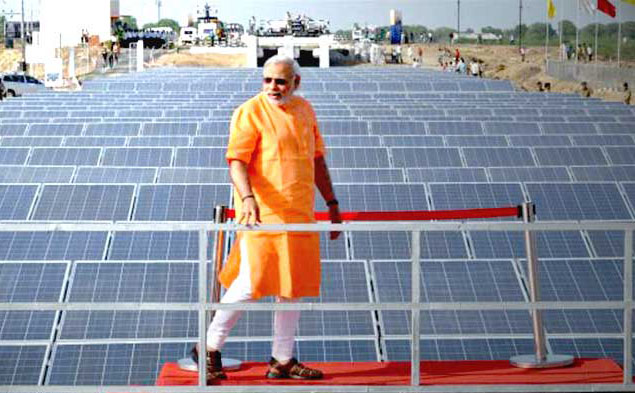The International Solar Alliance (ISA), jointly launched by India and France at the UN Climate Change Conference over two years ago, is set to turn to the sun to brighten its future with Prime Minister Narendra Modi and French President Emmanuel Macron co-chairing its founding conference in the national capital on Sunday.
A brainchild of Modi, the India-based alliance — a coalition of 56 signatories to the ISA Framework Agreement — aims at accelerating deployment of solar energy by reducing costs and making adequate funding available for its rapid deployment in solar-rich member-nations.
The ISA is a tremendous initiative by India and France to accelerate the inevitable technology-driven renewable energy transformation of the world’s electricity markets, Tim Buckley, the Energy Finance Studies Director with the US-based Institute for Energy Economics and Financial Analysis, told IANS.
The deflationary benefits of renewable energy are an added bonus to consumers worldwide and the policy learning evident from India’s accelerated deployment are exceptionally valuable as countries as diverse as Egypt, the Philippines and Thailand now embark on a similar journey, he said.
With the backing of nearly 121 member-countries rich in solar energy, 26 have so far ratified ISA’s Framework Agreement.
ISA became a treaty-based inter-governmental international organisation on December 6, 2017, registered under Article 102 of the United Nations Charter.
Globally, India’s the third-biggest solar installer after China and the US. India has reached 20 GW cumulative solar capacity, achieving the milestone four years ahead of the 2022 target originally set in the National Solar Mission.
It now aims to increase its solar capacity to 100 GW by 2022.
India’s solar installations in 2017 at 9,629 MW was more than double the 4,313 MW installed in 2016.
Its pipeline of utility-scale projects under development stood at approximately 10.6 GW at year-end 2017, with another 4.3 GW of tenders pending auction.
The share of coal-based power plants in new installations declined significantly from 62 per cent in 2016 to just 19 per cent in 2017, whereas solar power led with around 45 per cent of total power capacity additions.
While India’s power demand will double over the next decade, its draft “Ten Year Electricity Plan” calls for this rising demand to be met with 275 GW of renewable energy capacity by 2027 — without requiring new coal plants beyond those already under construction.
The cumulative solar capacity of ISA member-countries is around 175 GW by end of 2017, around 44 per cent of the global capacity.
However, these are concentrated in China, India and Australia with 130 GW, 20 GW and 7 GW installations, respectively, or around 90 per cent of all ISA member-country solar capacity.
Tracing ISA’s two-year journey, experts say the key milestones include the joint declaration signed on October 6 last year with the European Investment Bank to mobilise finance for promoting solar energy.
ISA aims to mobilise more than $1,000 billion in solar investments by 2030 to minimise fossil fuel dependence that help keep global temperatures from rising above two degrees Celsius by the end of the century.
At the last UN Climate Change Conference (COP-23) in Bonn last year, ISA presented the Common Risk Mitigation Mechanism, its first offering to deepen solar markets and unlock finance for solar projects in developing economies.
The Common Risk Mitigation Mechanism will create a global solar market, boosting confidence in the international development community and private and public institutional financiers.
As part of the Mechanism’s pilot phase, a $1 billion guarantee could crowd in up to $15 billion of investments for 20 GW of solar PV capacity in more than 20 countries.
“In the coming years, ISA could inspire and support several developed and developing countries to advance on a clean energy pathway by lowering financing costs, developing common standards and encouraging knowledge sharing,” said Arunabha Ghosh, CEO of policy research institute Council on Energy, Environment and Water.







Leave a Reply